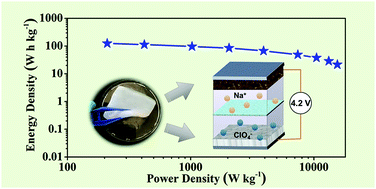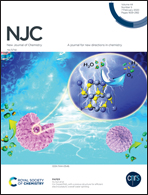Constructing consistent pore microstructures of bacterial cellulose-derived cathode and anode materials for high energy density sodium-ion capacitors†
Abstract
Sodium-ion capacitors are a new type of energy storage devices that possess the respective advantages of both sodium-ion batteries and electrochemical capacitors. However, the low energy density of sodium-ion capacitors is the main reason restricting their real applications. The key point is to match the kinetic behaviors of the anode and cathode. In this study, similar pore microstructures for both anode and cathode are constructed by using bacterial cellulose as a precursor; the products exhibit identical hierarchical micropore–mesopore networks and consistent pore distributions of 1–3 nm. These similar pore microstructures can effectively improve the behaviors of charge transport and ion diffusion. Benefiting from the merits of the advanced structures and good performance of the anode and cathode materials, a constructed sodium-ion capacitor delivers a high energy density of 124 W h kg−1 at a power density of 210 W kg−1 and a power density of 15 500 W kg−1 at an energy density of 22 W h kg−1 within the potential range of 0–4.2 V; meanwhile, an outstanding cycle performance of 2000 cycles was obtained, with a capacity retention of 99.6%. This study provides a simple and promising method to match the capacity and kinetic behavior of the anode and cathode to build high-performance sodium-ion capacitors.



 Please wait while we load your content...
Please wait while we load your content...